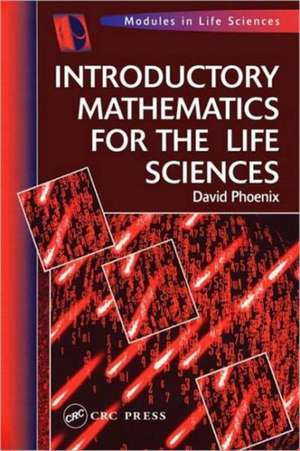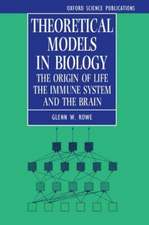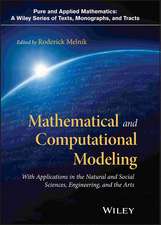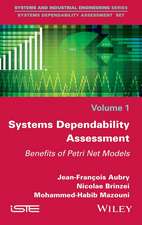Introductory Mathematics for the Life Sciences: Lifelines Series
Autor David Phoenixen Limba Engleză Paperback – 2 sep 1997
| Toate formatele și edițiile | Preț | Express |
|---|---|---|
| Paperback (1) | 449.88 lei 6-8 săpt. | |
| CRC Press – 2 sep 1997 | 449.88 lei 6-8 săpt. | |
| Hardback (1) | 1017.18 lei 6-8 săpt. | |
| CRC Press – 30 ian 2018 | 1017.18 lei 6-8 săpt. |
Preț: 449.88 lei
Nou
Puncte Express: 675
Preț estimativ în valută:
86.11€ • 93.57$ • 72.38£
86.11€ • 93.57$ • 72.38£
Carte tipărită la comandă
Livrare economică 21 aprilie-05 mai
Preluare comenzi: 021 569.72.76
Specificații
ISBN-13: 9780748404285
ISBN-10: 0748404287
Pagini: 244
Dimensiuni: 178 x 254 x 15 mm
Greutate: 0.46 kg
Ediția:1
Editura: CRC Press
Colecția CRC Press
Seria Lifelines Series
ISBN-10: 0748404287
Pagini: 244
Dimensiuni: 178 x 254 x 15 mm
Greutate: 0.46 kg
Ediția:1
Editura: CRC Press
Colecția CRC Press
Seria Lifelines Series
Public țintă
UndergraduateCuprins
Numbers. Fractions, percentages and ratios. Basic algebra & measurement. Powers and scientific notation. Concentration and accuracy. Tables, charts and graphs. Linear functions. Power functions. Exponential functions. Logarithmic Functions. Introduction to statistics. Appendix: Solution to problems.
Descriere
Introductory Mathematics for the Life Sciences offers a straightforward introduction to the mathematical principles and applications needed for studies in the life sciences. Starting with the basics of numbers, fractions, ratios, and percentages, the author explains progressively more sophisticated concepts. He moves from algebra, measurement, and scientific notation to examine the use of exponentials and logarithmic functions, and even includes introductory statistics. Worked examples illustrate concepts, applications, and interpretations. Exercises at the end of each chapter, with answers posted at the end of the text, help readers apply and practice the skills they develop.




















